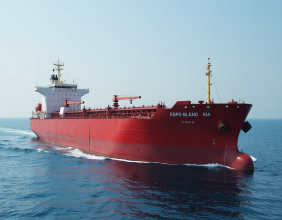Highlights:
Enterprise Products Partners shares showed upward movement during the latest NYSE Composite session.
The company remains active in energy logistics including pipelines, storage, and processing facilities.
Developments in hydrocarbons transport and export activity contributed to increased attention.
Enterprise Products Partners (NYSE:EPD) operates in the energy infrastructure sector, which includes pipelines, terminal operations, and hydrocarbon processing. The company’s shares moved upward in the latest NYSE Composite session, placing it among firms within the midstream energy segment showing activity tied to broader logistical shifts.
The energy infrastructure sector encompasses the physical systems used to move, store, and process natural gas, crude oil, and refined products. Enterprise Products Partners plays a key role in this network with its broad asset footprint across North America.
Operational Footprint and Logistics Capabilities
Enterprise Products Partners operates an extensive network of onshore and offshore pipelines, natural gas liquids (NGL) fractionators, crude oil terminals, marine export facilities, and natural gas storage locations. These assets enable the company to serve producers, refiners, and petrochemical manufacturers throughout the United States.
The company’s pipeline system spans several production basins, connecting to major storage hubs and industrial regions. Its operations allow it to handle significant volumes of hydrocarbons, supporting the energy supply chain across various market conditions.
Marine and Export Activities
Enterprise Products Partners is also involved in marine terminal operations that enable the export of NGLs and crude oil to international destinations. Through these terminals, the company supports energy trade routes linked to refining centers and petrochemical demand across global regions.
Recent market activity related to marine logistics and export infrastructure has contributed to interest in firms like Enterprise Products Partners. These operations provide scalability and flexibility in response to commodity transport needs.
Commodity Transportation Trends
The company engages in fee-based contracts for many of its services, helping maintain a steady throughput across its systems. Its infrastructure is positioned to support shifts in domestic production, petrochemical demand, and export volume.
As market flows respond to changes in refining operations and global trade patterns, energy logistics providers play an essential role in facilitating continuity. Enterprise Products Partners remains active in transportation of hydrocarbons from production sites to end-use facilities or ports.
Recent Market Activity
Recent upward movement in the company’s stock took place during a session that reflected broader developments in energy infrastructure. With ongoing investment in midstream assets and logistical expansion, Enterprise Products Partners has been participating in capacity enhancements across its system.
Updates include construction and integration of additional pipeline connections, expansion of storage capacity, and augmentation of loading capabilities at marine terminals. These infrastructure additions align with shifts in domestic and export logistics.
The company’s ability to support multi-product transportation—covering natural gas, NGLs, petrochemicals, and crude oil—provides operational diversity in response to market needs. This diversity contributes to steady throughput across multiple segments of the energy supply chain.
Sector Focus and Infrastructure Integration
The energy infrastructure sector remains an essential component of energy markets. Companies operating within this sector often maintain asset networks that support refining, distribution, and export activity. Enterprise Products Partners' integrated system offers coverage from wellhead to waterborne transport, contributing to efficient hydrocarbon handling.
Its infrastructure spans core regions including the Permian Basin, Eagle Ford, and Gulf Coast export centers. With a presence in both upstream basins and downstream outlets, the company’s system connects key components of the energy value chain.





